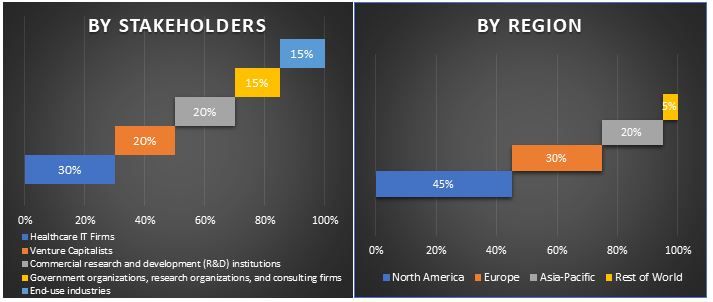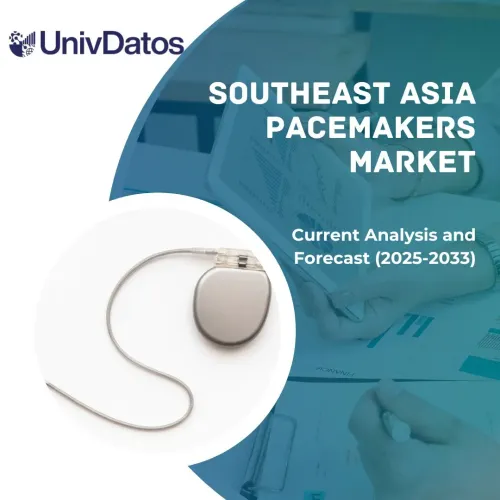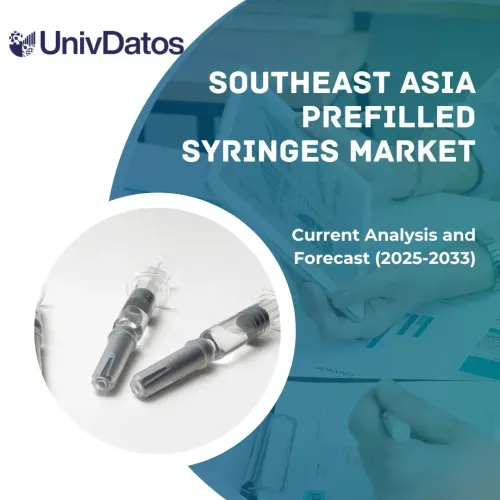- Home
- About Us
- Industry
- Services
- Reading
- Contact Us
Healthcare Fraud Detection Market: Current Analysis and Forecast (2021-2027)
Emphasis on Component (Services, Software); Delivery Models (On-Premises, On-Demand); Solutions (Descriptive Analytics, Predictive Analytics, Prescriptive Analytics); Application (Insurance Claims, Payment Integrity, Pharmacy Billing, Others); End-User (Insurance Company, Government Agencies, Third-party Service Providers, Others), and Region & Country

Healthcare Fraud Detection Market was valued at US$ 1.5 billion in 2020 and is expected to grow at a CAGR of 25% over the forecast period (2021-2027).Healthcare fraud has led to a significant addition of expenses in the healthcare system. As per GAO (General Accounting Office), ‘federal spending on major health care programs to grow from 5.9% of GDP in the fiscal year 2020 to 8.0% of GDP in the fiscal year 2050’. The enormous volume of money involved in the healthcare sector and its size make it an attractive fraud target. The demand for healthcare fraud detection is increasing on account of rising number of health insurers, an increase in the number of frauds in pharmacy bills, and government initiatives to reduce fraud related to healthcare data. Programs such as the Medicare Fraud Strike Force (OIG 2017), endorsed to help reduce fraud, but continued efforts are necessary to better alleviate the effects of fraud. As per NCBI reporting, between 2005-2019, the total number of individuals affected by healthcare data breaches totaled 249.1 million. Among these 157.4 million individuals were affected in the last five years alone globally. In the year 2018, the number of data breaches reported was 2,216 from 65 countries. Out of these, the healthcare industry faced 536 breaches, which implies that the industry is facing the highest number of breaches, compared to other industrial sectors. There were 2,013 data breaches reported from 86 countries in 2019. In 2019, total number of healthcare records that were exposed, stolen, or illegally disclosed stood at 41.2 million, from 505 healthcare data breaches. According to IBM, the average cost of a data breach in 2019 stood at US$ 3.92 million, while a healthcare industry breach usually costs US$ 6.45 million. The cost was highest in the US, compared to other countries.
Value Chain of Global Healthcare Fraud Detection Market

Insights Presented in the Report
“Amongst components, Software segment dominates the market in 2020.”
Based on components, the market is fragmented into Services and Software. The healthcare fraud detection market is expected to record the high growth owing to advancements in software technology, a high adoption rate of fraud detection software by insurance companies, rise in software availability in the developed regions, among others. For instance, healthcare cloud has launched patient analytics software for the tracking of patient outcomes and utilizes extensive database and proprietary analytics to recommend procedures based on patient comorbidities. The software segment generated revenue of USD XX million in 2020 and is expected to grow at a CAGR of XX% during the forecast period to reach a market valuation of USD XX million by 2027F.
“Amongst delivery models, On-Premise’s segment holds the major share.”
Based on delivery models, the market is bifurcated into on-premises and on-demand delivery model. On-premises delivery model is expected to record highest growth owing to high flexibility, pay-as-you-go pricing, and the lack of upfront capital investments for hardware. The On-premises delivery model generated revenue of USD XX million in 2020 and is expected to grow at a CAGR of XX% during the forecast period to reach a market valuation of USD XX million by 2027F.
“Amongst solutions type, descriptive analytics is anticipated to grow at the highest CAGR”
Based on solutions type, the market is divided into descriptive analytics, predictive analytics, and prescriptive analytics. Descriptive analytics holds the major share owing to its high assistance in predictive and prescriptive analytics. For instance, Vidence and NTT DATA announced a partnership to deliver predictive analytics in oncology. This collaboration will make use of a combination of medical imaging scans, clinical and outcomes data to build a predictive model that will improve treatment regimens.
Amongst applications, the review of insurance claims holds the major share”
Based on applications, the market is segmented into insurance claims, payment integrity, pharmacy bill and others. The review of insurance claims holds the largest share owing to a high number of people seeking health insurance, an increase in the uptake of the prepayment review model amongst the patients, an increase in fraud activities, and the rising need to control these frauds. For instance, Care Shield insurance announced the launch of Care Shield, which will cover numerous medical expenses and the protection of No Claim Bonus (NCB) benefit from lapsing.
“Government Agencies were the largest end-users of Healthcare fraud detection system.”
Based on end-user, the market is fragmented into private insurance payers, government agencies, third-party service providers, and others. Government agencies dominates the market on account of rising fraudulent activities coupled with emerging need for data security. For instance, Criminal Division, Fraud Section’s Health Care Fraud (HCF) Unit is comprised of more than 70 prosecutors whose core mission is to prosecute health care fraud-related cases involving patient harm and huge financial loss.
“North America signifies one of the largest markets of Global Healthcare Fraud Detection Market.”
For a better understanding of the adoption of Healthcare Fraud Analytics, the market is analyzed based region/ countries including North America (US, Canada, and the Rest of North America), Europe (Germany, France, Italy, Spain, UK, and Rest of Europe), Asia-Pacific (China, Japan, India, Australia, and Rest of APAC), and Rest of World. North America dominates the healthcare fraud analytics market in 2020, on account of the rising number of people seeking health insurance, rising fraudulent activities, and rise in government anti-fraud initiatives and advancements in technology. As per the National Healthcare Anti-Fraud Association (NHCAA), health care fraud costs the U.S. nearly US$ 68 billion every year.
Reasons to buy this report:
- The study includes market sizing and forecasting analysis validated by authenticated key industry experts
- The report presents a quick review of overall industry performance at one glance
- The report covers an in-depth analysis of prominent industry peers with a primary focus on key business financials, product portfolio, expansion strategies, and recent developments
- Detailed examination of drivers, restraints, key trends, and opportunities prevailing in the industry
- The study comprehensively covers the market across different segments
- Deep dive regional/country-level analysis of the industry
Customization Options:
Healthcare Fraud Detection Market can further be customized as per the requirement or any other market segment. Besides this, UMI understands that you may have your own business needs, hence feel free to connect with us to get a report that completely suits your requirements.
Table of Content
Analyzing the historical market, estimation of the current market, and forecasting the future market of the Global Healthcare Fraud Detection were the three major steps undertaken to create and analyze the adoption of fraud detection technique with numerous applications including insurance claims, payment integrity, pharmacy bill and other. Exhaustive secondary research was conducted to collect the historical market numbers and estimate the current market size. Secondly, to validate these insights, numerous findings and assumptions were taken into consideration. Moreover, exhaustive primary interviews were also conducted, with industry experts across the value chain. Post assumption and validation of market numbers through primary interviews, we employed a bottom-up approach to forecast the complete market size. Thereafter, market breakdown and data triangulation methods were adopted to estimate and analyze the market size of segments and sub-segments the industry pertains to. Detailed methodology is explained below:
Analysis of Historical Market Size
Step 1: In-Depth Study of Secondary Sources:
Detailed secondary study was conducted to obtain the historical market size of the Healthcare Fraud Detection market through company internal sources such as annual report & financial statements, performance presentations, press releases, etc., and external sources including trade journals, news & articles, government publications, competitor publications, sector reports, third-party database, and other credible publications.
Step 2: Market Segmentation:
After obtaining the historical market size, we conducted a detailed secondary analysis to gather historical market insights and share for different segments and regions. Major segments included in the report are Component, Delivery Models, Solutions Type, Application, End-User, and Region. Further country-level analyses were conducted to evaluate the overall adoption of Healthcare fraud detection system in major regions.
Step 3: Factor Analysis:
After acquiring the historical market size of different segments and sub-segments, we conducted a detailed factor analysis to estimate the current market size of the Global Healthcare Fraud Detection Market. Further, we conducted factor analysis using dependent and independent variables such as increasing number of frauds in pharmacy bills, rising number of health insurers and government initiatives to reduce health data breach. A thorough analysis was conducted for demand and supply-side scenarios considering top partnerships, merger and acquisition, business expansion, and product launches in healthcare fraud detection arena across the globe.
Current Market Size Estimate & Forecast
Current Market Sizing: Based on actionable insights from the above 3 steps, we arrived at the current market size, key players in the global healthcare fraud detection market, and market shares of different segments. All the required percentage split, and market breakdowns were determined using the above-mentioned secondary approach and were verified through primary interviews.
Estimation & Forecasting: For market estimation and forecast, weights were assigned to different factors including drivers & trends, restraints, and opportunities available for industry stakeholders. After analyzing these factors, relevant forecasting techniques i.e., the bottom-up approach was applied to arrive at the market forecast to 2027. The research methodology adopted to estimate the market size encompasses:
- The industry’s market size, in terms of value (USD) and the adoption rate of global healthcare fraud detection systems across the major region/country
- All percentage shares, splits, and breakdowns of market segments and sub-segments
- Key players in the global healthcare fraud detection market and the growth strategies adopted by these players to compete in the fast-growing market
Market Size and Share Validation
Primary Research: In-depth interviews were conducted with the Key Opinion Leaders (KOLs) including Top Level Executives (CXO/VPs, Sales Head, Marketing Head, Operational Head, and Regional Head, Country Head, etc.) across major regions. Primary research findings were then summarized, and statistical analysis was performed to prove the stated hypothesis. Inputs from primary research were consolidated with secondary findings, hence turning information into actionable insights.
Split of Primary Participants in Different Regions
Market Engineering
Data triangulation technique was employed to complete the overall market estimation and to arrive at precise statistical numbers of each segment and sub-segment of the Global healthcare fraud detection market. Data was split into several segments post studying various parameters and trends in the areas of Component, Delivery Models, Solutions Type, Application and End-User.
Main Objective of the Global Healthcare Fraud Detection Market Study
The current & future market trends of healthcare fraud detection were pinpointed in the study. Investors can gain strategic insights to base their discretion for investments from the qualitative and quantitative analysis performed in the study. Current and future market trends were determined the overall attractiveness of the market at a regional level, providing a platform for the industrial participant to exploit the untapped market to benefit as a first-mover advantage. Other quantitative goals of the studies include:
- Analyze the current and forecast market size of healthcare fraud detection system in terms of value (US$). Also, analyze the current and forecast market size of different segments the industry pertains to
- Segments considered in the study include Component, Delivery Models, Solutions Type, Application, End-User
- Define and analysis of the regulatory framework for the healthcare fraud detection industry
- Analyze the value chain involved with the presence of various intermediaries, along with analyzing customer and competitor behaviors of the industry
- Analyze the current and forecast market size of the Global Healthcare Fraud Detection market for the major region including North America (US, Canada, Rest of North America), Europe (Germany, UK, France, Spain, Italy, Rest of Europe), Asia-Pacific (China, Japan, India, Australia, Rest of APAC), and Rest of the World
- Company profiles of top players operating in the Global Healthcare Fraud Detection market and the growth strategies adopted by the market players to sustain in the fast-growing market
- Deep dive regional/country level analysis of the industry
Related Reports
Customers who bought this item also bought











